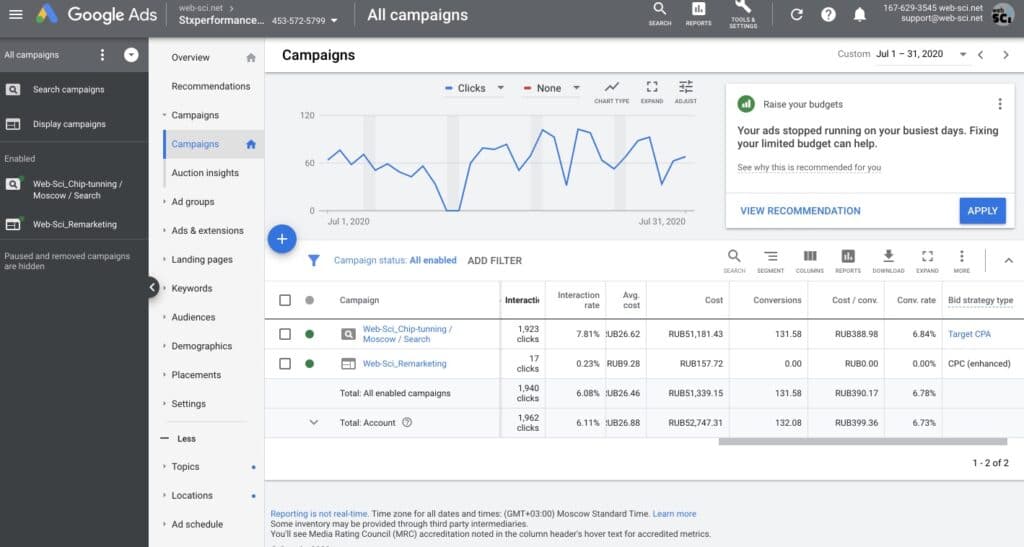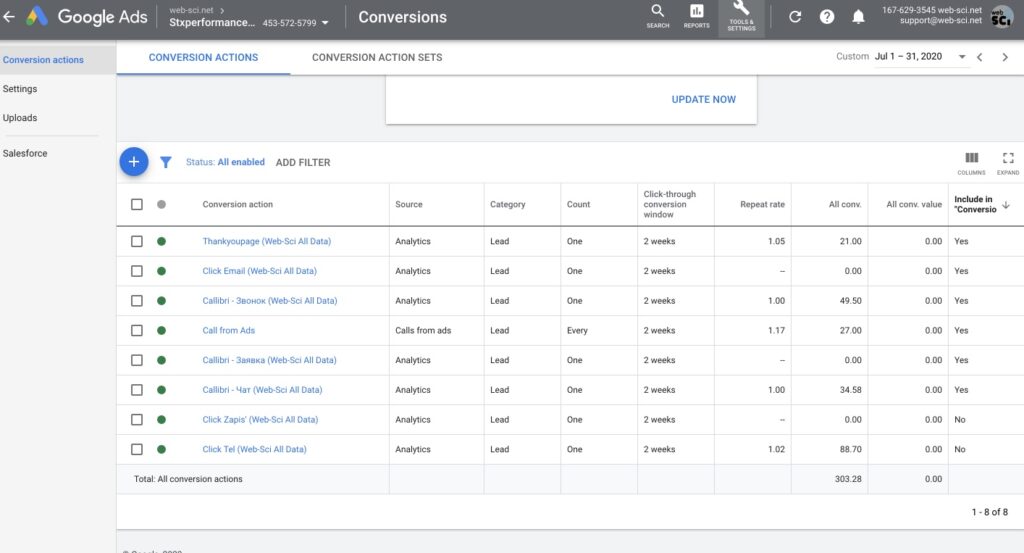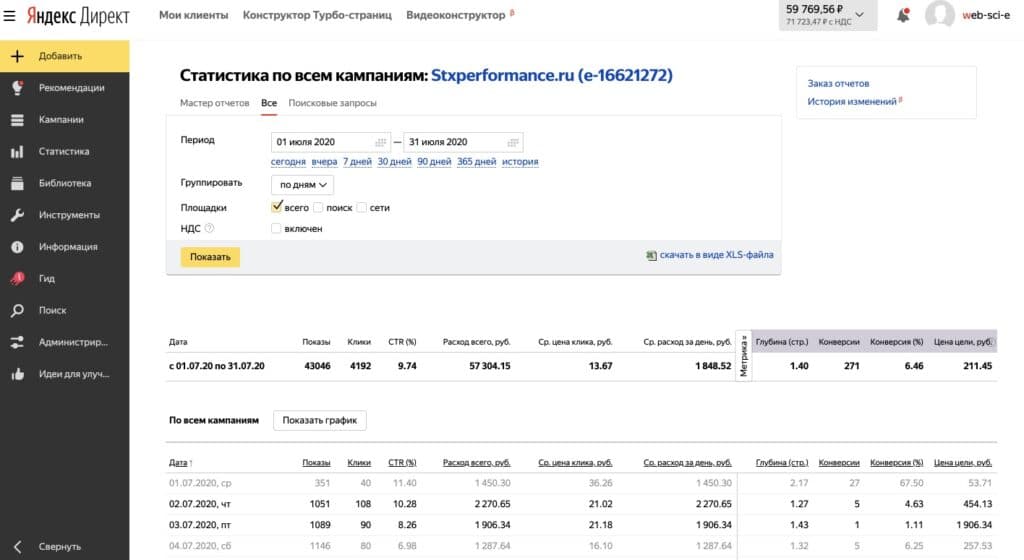Case Study on the Auto Industry - Stxperformance.ru

Intro
The STX PERFORMANCE tuning shop provides chip tuning services in Moscow and the surrounding area 🚘. The sector is quite in-demand, and as we all know, demand gives rise to supply. The market doesn’t stand still, as new companies are always coming up and clients are looking for specifics the most favorable to them. In this case, PPC advertising was a basic necessity. And its high-quality setting was an opportunity to receive a constant inflow of orders with some stable investments.
Initial Data
- Client’s website – stxperformance.ru
- Advertising account – Google Ads
Initially, the client’s site was made in the format of a landing page on the Tilda website builder. This worked well enough for basic setting up advertising in Yandex Direct and Google Ads, which is exactly what was required. The basis for the work was a brief filled out by the customer, which showed us the priority services and features of the chip tuning market 🔧. The work began with the creation of advertising campaigns for each service and later grew into the finalization of the site and optimize the advertising.
Objectives
Our goal was set to attract new customers through PPC advertising with a gradual decrease in the cost of conversion. The customer approved a budget of RUB 1500-2000 per day for each ad network.
Initially, we established a few objectives:
- Launching search ads and remarketing on Google Ads
- Checking the effectiveness of both network and reformatting advertising when necessary
Course of Action
Redesign
The decision to order the client’s service is influenced not only by price but also by the convenience of being able to place an order on the website. In addition, Google and Yandex are more in line with the pages that are most relevant to queries and convenient for the visitor. As such, after 3-4 months of working with the landing page, we decided to make it a multi-page site with a clear structure and better usability.
For this project, a UX/UI design specialist was hired, who:
- carried out an audit of the site
- finalized the site’s design and usability
- eliminated small issues that would frustrate users
The programmer then moved the site from Tilda to WordPress and redesigned it.
The Ad Campaigns’ New Structure
While working on the design and usability of the site, it became necessary to change the structure of advertising campaigns. Since we now had 9 separate service pages, the client’s budget was less than enough to get enough clicks from each individual ad campaign.
In order not to increase the budget, we decided to distribute all services through ad groups and collect them into one search advertising campaign, both in Google Ads and Yandex.Direct.
The new structure = one search engine advertising campaign + 1 remarketing (retargeting) advertising campaign.
Negative keywords
To minimize non-targeted traffic, we constantly added and continued to add negative keywords to the advertising campaigns:
- Queries for cars that the company does not work with (Lada, Logan, etc.).
- Ambiguous queries (for example, when typing ‘head firmware’ or ‘head unit’ in the search, many users imply a head unit (like a radio), not the electronic control unit that the company works on).
Implementation
Work on advertising can be divided into 2 stages:
- The first six months before the website’s redesign and the update to the advertising structure.
- Work after the updates.
Search ads were launched gradually, in accordance with our corporate strategy:
- In the early days of the display, we used the average bid for medium-frequency queries in Google and around the same bid in Yandex.Direct. This brought us the first conversions, which helped Google calculate bids for display at the top, and for Yandex.Direct we estimated the volume of traffic, average CTR, and cost per click.
- We manually set bids for each request for impressions at the 2 and 3 positions.
- On Google Ads, we switched to the Target CPA strategy, where Google Ads increases the bid if it understands that the display of the ad will lead to a conversion. On Yandex.Direct, we found the average rate and price of received conversion that we were satisfied with.
The following were considered conversions:
- Calling (call tracking)
- Chat
- Request through a form on the site
After the first six months of work on the project, the average cost per conversion was 500-700 rubles. One fact that influenced the number of leads and their cost was the season. Summer has become a more favourable time of the year for this type of business.
Smart strategies, the gradual placement of negative keywords, work on the site, and control of bids in Yandex.Direct and a new structure of advertising campaigns allowed to reduce the cost of conversion to an average of 300 rubles.
Results
Currently, work on context advertising continues and generates:
- The average cost of conversion – 300 roubles (Data for July 2020 Google Ads + Yandex.Direct)
- Number of visitors to the site – 6132 (Data for July 2020 Google Ads + Yandex.Direct)
- Number of conversions – 403 (Data for July 2020 Google Ads + Yandex.Direct)
🔜 We have plans to expand advertising for new services, SEO promotion, and retargeting with customized pixels on VK Ads and Facebook Ads.
Final Thoughts
The STX PERFORMANCE project is an excellent example of synergy between local businesses and internet marketing. Investments in advertising quickly paid off and allowed our client to not only develop their business but also improve their promotion tools. In just six months, we managed to halve the cost of attracting a lead 📉, and in a year we switched from basic PPC advertising to complex promotion.









 Close
Close
